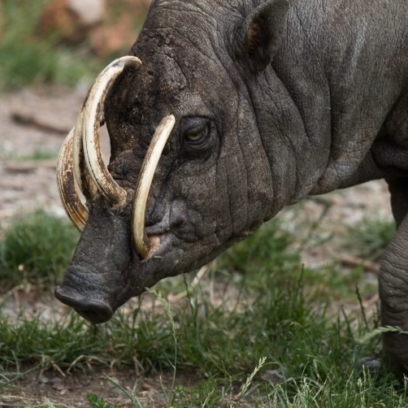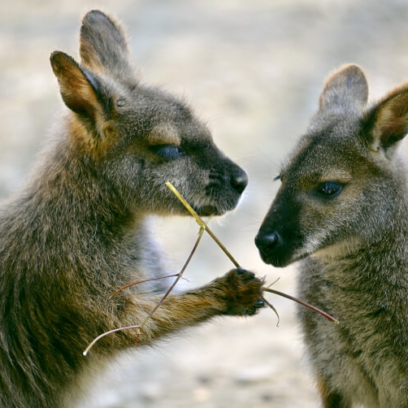Binturong
Arctictis binturongGeographic Region: dense forests in the tropical and semi-tropical areas of Southeast Asia
Did You Know? As binturongs travel around the forest, they rub a pungent substance produced in their scent glands onto branches and foliage. The animals use the odor to mark territory as well as to attract mates. The substance smells like buttery popcorn! The binturong is one of only two carnivores with a prehensile tail. (The other is the kinkajou.) By grasping onto branches and trunks with its tail, the binturong moves more easily along the trees.

Details
Height: 2 – 3 ft.
Weight: 20 – 50 lbs.
dry dog food, Dallas Crown Carnivore diet, eggs, assorted fruits and vegetables
Vulnerable
World of Adaptations
Exhibit information
Come explore a World of Adaptations! Animals face numerous challenges in the natural world such as finding shelter and enough food, avoiding predators, and finding mates. However, they have developed adaptations that increase their chances of survival. Adaptations can be physical; the tail of the wallaby helps it balance and change direction as it hops. Adaptations can also be behavioral; gibbons vocalize in the morning to announce their presence to other animals in the area. They can also be a combination of things such as a Komodo dragon’s impressive teeth, sharp claws, and deadly venom. Come and explore a World of Adaptations and see and hear the adaptations of these fascinating creatures including Elsie, the only Komodo dragon at any zoo in New England.




